Hand-torn leaves cooked to a tender-crispy texture, Chinese style cabbage stir-fry is simple yet delicious. This recipe shows you two versions: a vegetarian one with Mala seasoning & a meaty one with Chinese sausage.
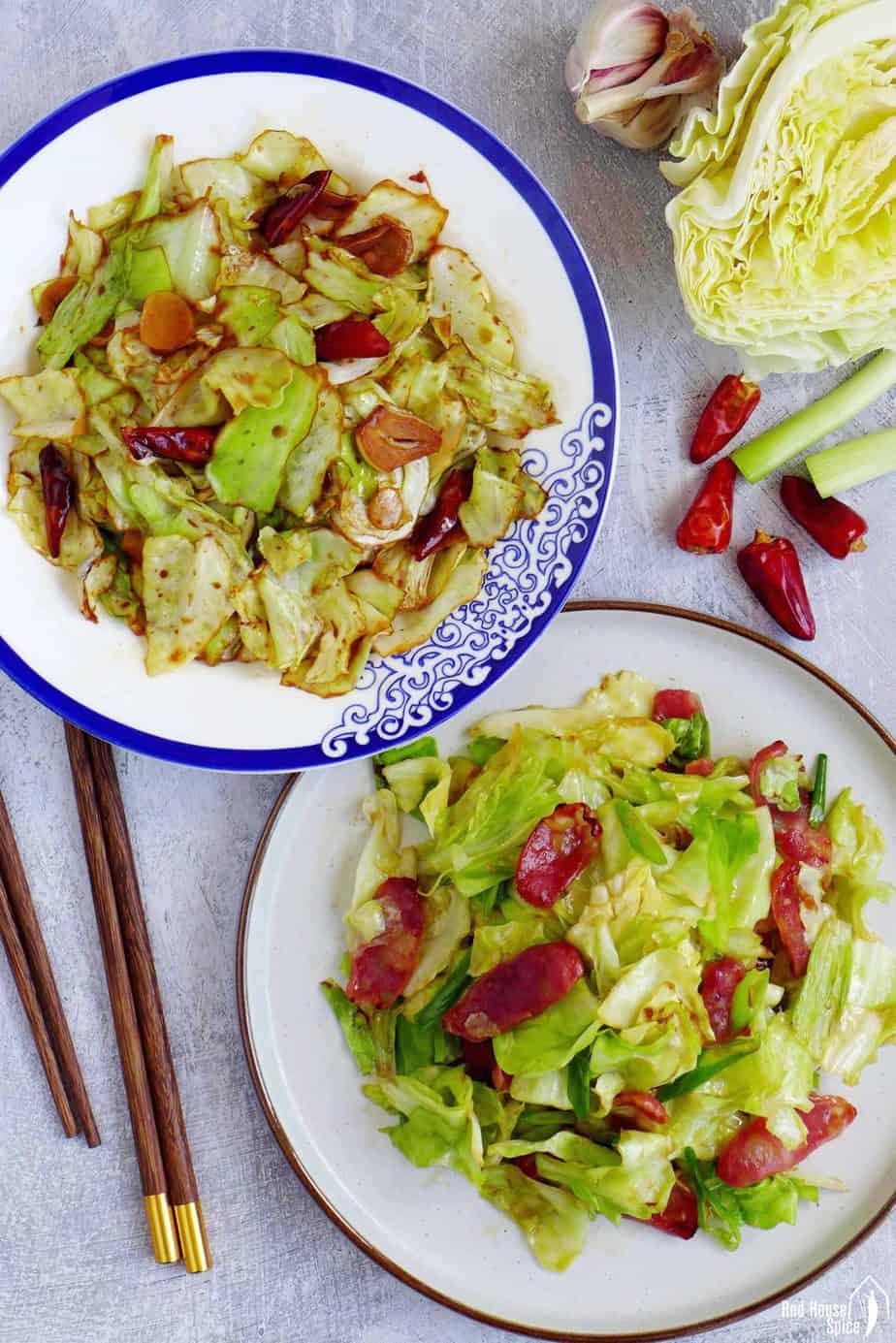
What kind of cabbage?
Let’s first talk about the main ingredient, cabbage. For today’s cabbage stir-fry, Chinese chefs/cooks usually use a variety known as Taiwanese flat cabbage. It’s oblate-shaped (like a pumpkin) and its leaves are loosely packed into layers (The regular green or purple cabbage commonly found in the West are much rounder and more densely layered).
I use another variety called sweetheart cabbage (aka pointed cabbage, hispi cabbage) as a substitute. It also has loosely packed leaves and a similar taste to Taiwanese flat cabbage.
Why hand-torn?
If you ever see cabbage stir-fry on the menu in Chinese restaurants, highly likely the name of the dish would be “Shou Si Bao Cai/手撕包菜” which means hand-torn cabbage. Unlike the usual knife-cutting method, cabbage is torn manually into irregular pieces.
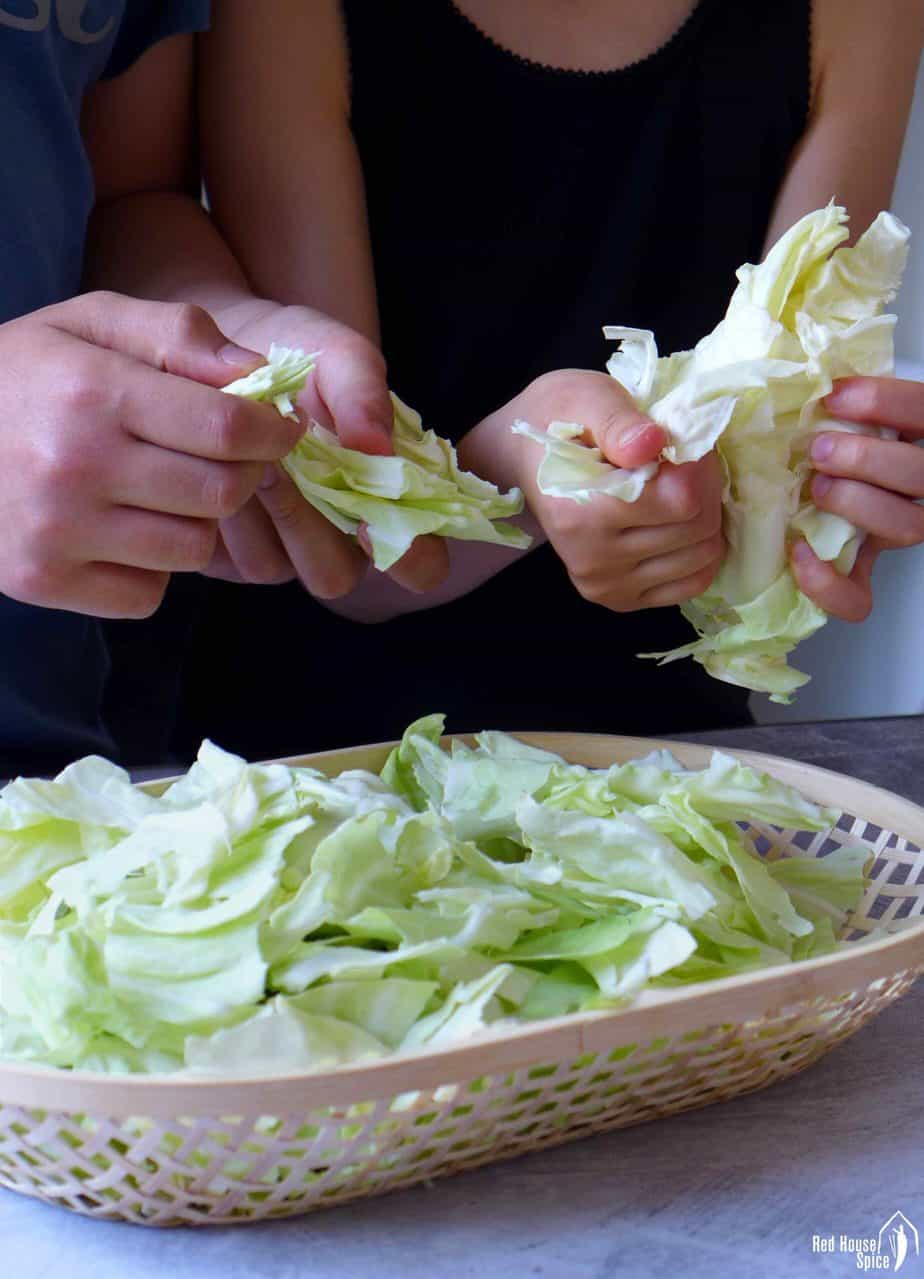
It’s believed that this particular technique makes the finished dish tastier. I haven’t found reliable scientific explanations to support this belief (let me know if you have any idea), but I always do so for the following reasons:
- Hand tearing makes it easier to remove the stem of each cabbage leaf. Since this is a quick stir-fry, the hard, thick stems wouldn’t cook through when tender, thin leaves are ready to be dished out.
- When cut by a knife, several layers of the cabbage tend to stay together. Hand tearing will make sure each piece is separated.
- I simply love the irregular look which I think is aesthetically more appealing.
How to stir fry in a wok?
Why use a wok
For the best taste & texture, ideally, you’ll need a traditional Chinese wok to cook this cabbage stir-fry. Also, its deep-bowl shape helps the ingredients to stay inside while tossing (uncooked cabbage pieces are particular bulky).
Some of my readers have asked what type of wok I’d recommend. I personally like carbon steel woks which are light-weighted so very easy to manage with one hand. They heat up super fast and easily remain the highest possible temperature evenly.
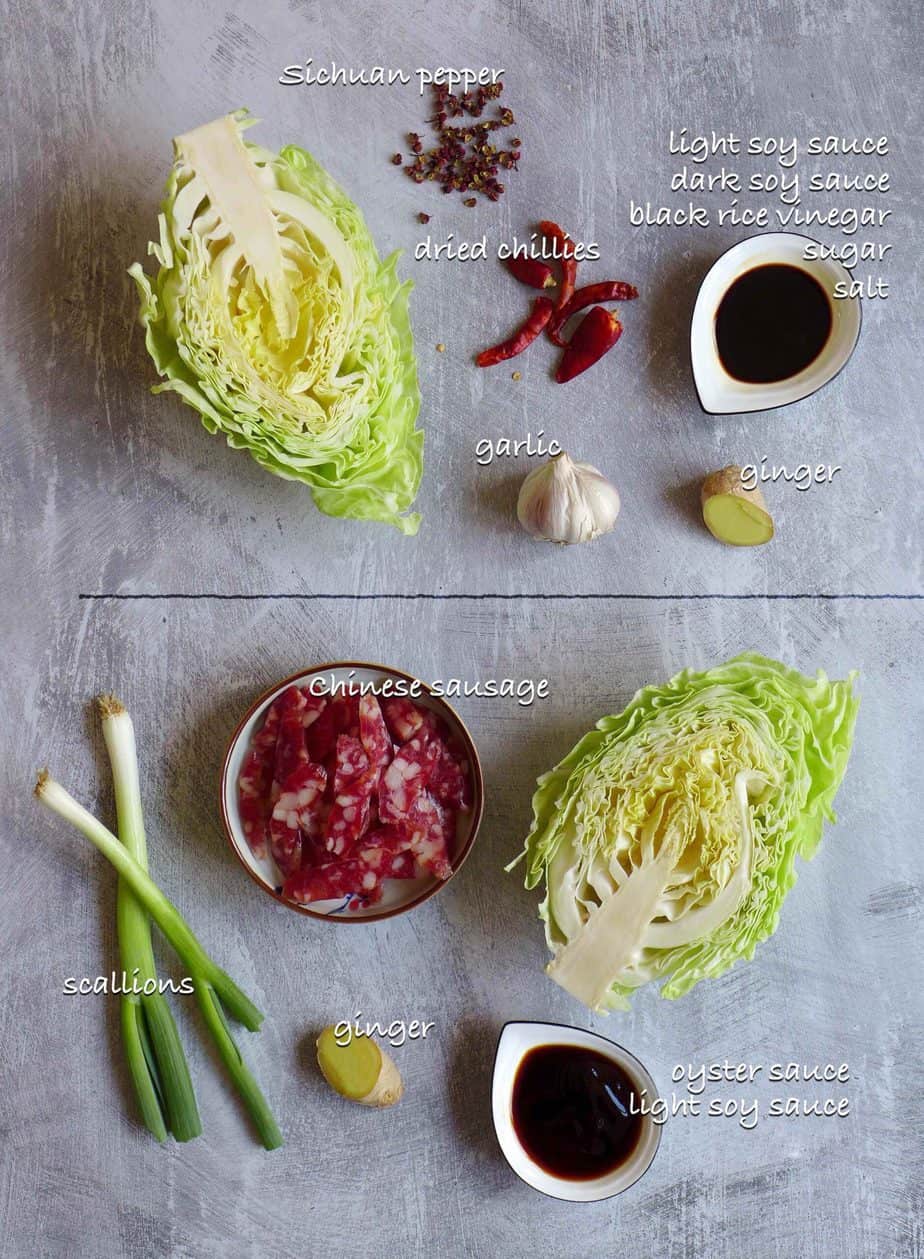
Have ingredients within reach
It takes less than 2 minutes to cook this dish. The fast stir-fry process helps the vegetable to achieve a tender-crispy texture and retain most of its pigments and nutrients. Before you start, make sure you have all the ingredients (including seasonings) at a reachable distance so you don’t struggle to get them while holding a smoking wok.
Stir constantly & don’t overcook
Due to the high temperature, food burns easily in a wok, especially the spices and small-sized ingredients, such as garlic, ginger, scallions, etc. Throughout the process, make sure you stir constantly to ensure even heating and to avoid burning. Also, don’t overcook! Otherwise, too much moisture will escape from the cabbage thus making it soggy and less crispy.
The vegetarian version
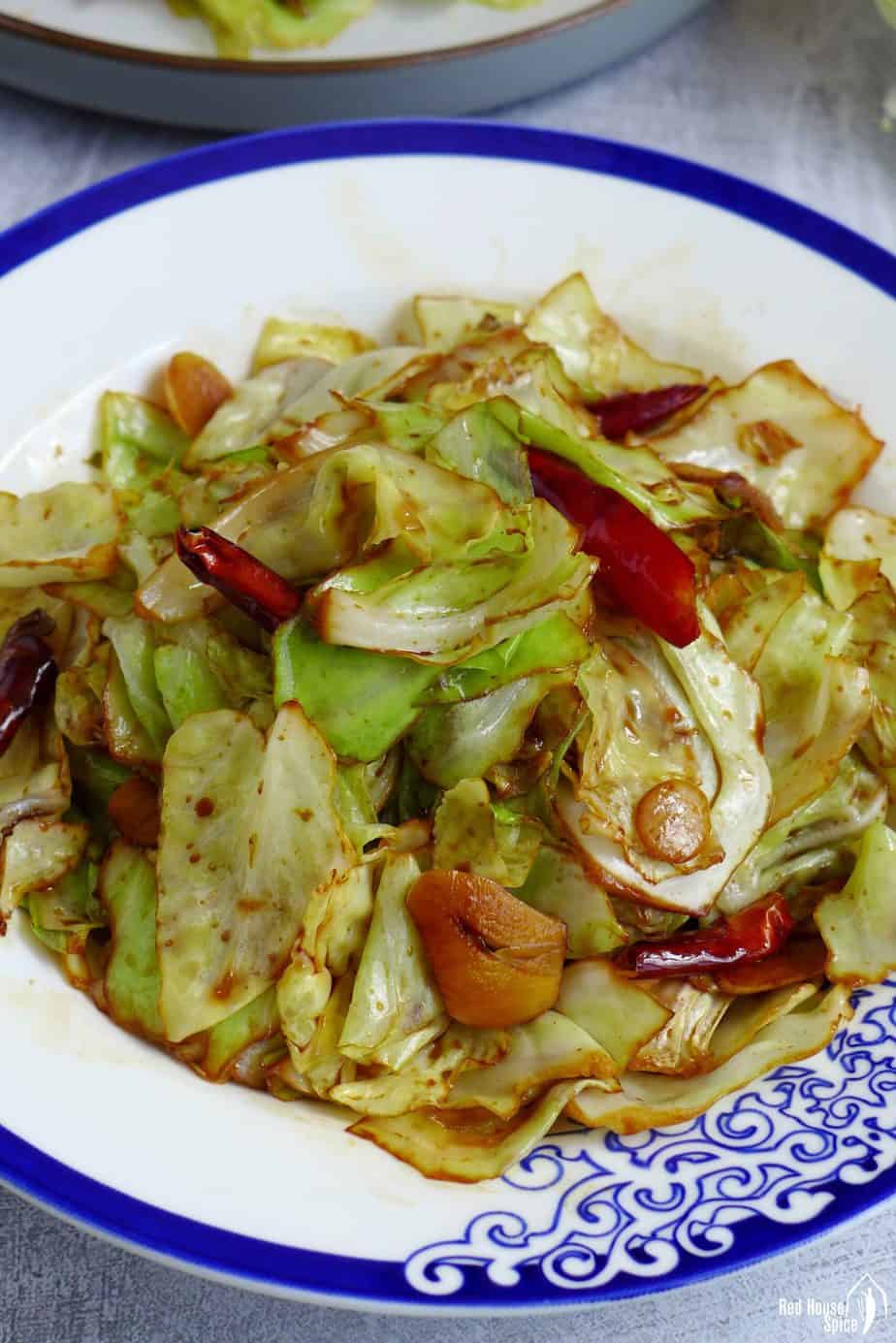
For the vegetarian version of cabbage stir-fry, I use the following ingredients to boost the flavour:
- Sichuan peppercorns. Add whole Sichuan peppercorns in cold oil in a cold wok then heat up. Remove them with a spatula when the oil has absorbed their citrus, numbing flavour. Make sure you don’t burn them otherwise you’ll get an unpleasant bitter taste (Read my complete guide to Sichuan pepper if you wish to learn more about this unique Chinese spice).
- Dried chillies. They pair well with Sichuan pepper and give the dish a pungent kick. You may replace them with chopped fresh chilli too.
- Garlic & ginger. They are indispensable for most Chinese stir-fry dishes. Cut them into thin slices and add to the oil along with dried chillies.
- Light soy sauce & dark soy sauce. The former provides a umami, salty taste. The latter gives the dish an appetizing, brown colour.
- Black rice vinegar. It adds a hint of sourness.
- Salt & sugar. Adjust the amount required according to your own taste.
The sausage version
What is Chinese sausage
It’s very common to use a small amount of meat in Chinese vegetable stir-fries to enrich the taste. Lap cheong/腊肠, known as Chinese sausage or Cantonese sausage, is one of my favourites. Made of pork and pork fat, it’s a type of dried sausage with a distinctively smoky, sweet, umami taste. It can be served on its own (steamed then sliced) or with other ingredients in stir-fried dishes, eg. Chinese sausage fried rice.
Use pork belly instead
For this recipe, I use Chinese sausage to lend a nice smoky & sweet flavour to the cabbage. You may use other types of meat too. Pork belly is the best alternative. Cut the meat into thin slices. Marinate with light soy sauce, Shaoxing rice wine, white pepper, salt and a little cornstarch. Then stir fry the same way.
The Stir fry procedure
Use the “hot wok cold oil/热锅凉油” method to start cooking. That is to say, firstly heat up the wok until it lightly smokes. Then pour in the oil and add sausage slices. This allows time for some of the fat in the sausage to leak out before adding the cabbage to the wok.
When the cabbage wilts, season the dish with oyster sauce and light soy sauce. Then stir for a further 20 seconds or so to finish.
Other delicious veggie dishes
No one in our Red House is vegetarian but we all love vegetables and regularly eat veggie-based meals. Here are some of our favourites:

Chinese cabbage stir-fry, two ways (手撕包菜)
Ingredients
For the vegetarian version
- 1 tablespoon cooking oil
- 1 teaspoon Sichuan peppercorn
- 3 cloves garlic, sliced
- 3 slices ginger
- 6 dried chillies - or fresh chillies
- 250 g cabbage, hand-torn into small pieces - see note 1
- ½ teaspoon dark soy sauce
- ½ teaspoon light soy sauce
- ¼ teaspoon black rice vinegar
- 1 pinch salt
- 1 pinch sugar
For the sausage version
- 1 tablespoon cooking oil
- 2 Chinese sausages (Lap cheong), sliced - see note 2
- 1 teaspoon ginger, julienned
- 250 g cabbage, hand-torn into small pieces - see note 1
- 1 stalk scallions, finely chopped
- 2 teaspoon oyster sauce
- ½ teaspoon light soy sauce
Instructions
For the vegetarian version
- Add cooking oil and Sichuan peppercorns to a cold wok. Sizzle over high heat until fragrant (do not burn). Remove the peppercorns with a spatular.
- Fry ginger, garlic and dried chillies in the oil briefly then stir in cabbage.
- When the cabbage wilts, add soy sauce, black rice vinegar, salt and sugar.
- Stir fry for a further 20 seconds or so. Dish out and serve warm.
For the sausage version
- Heat up the wok until it lightly smokes. Pour in oil then add Chinese sausage and ginger.
- When the sausage slices curl up a little, stir in cabbage and scallions.
- When the cabbage wilts add oyster sauce and light soy sauce.
- Stir fry for a further 20 seconds or so. Dish out and serve warm.
NOTES
NUTRITION DISCLOSURE: Nutritional information on this website is provided as a courtesy to readers. It should be considered estimates. Please use your own brand nutritional values or your preferred nutrition calculator to double check against our estimates.



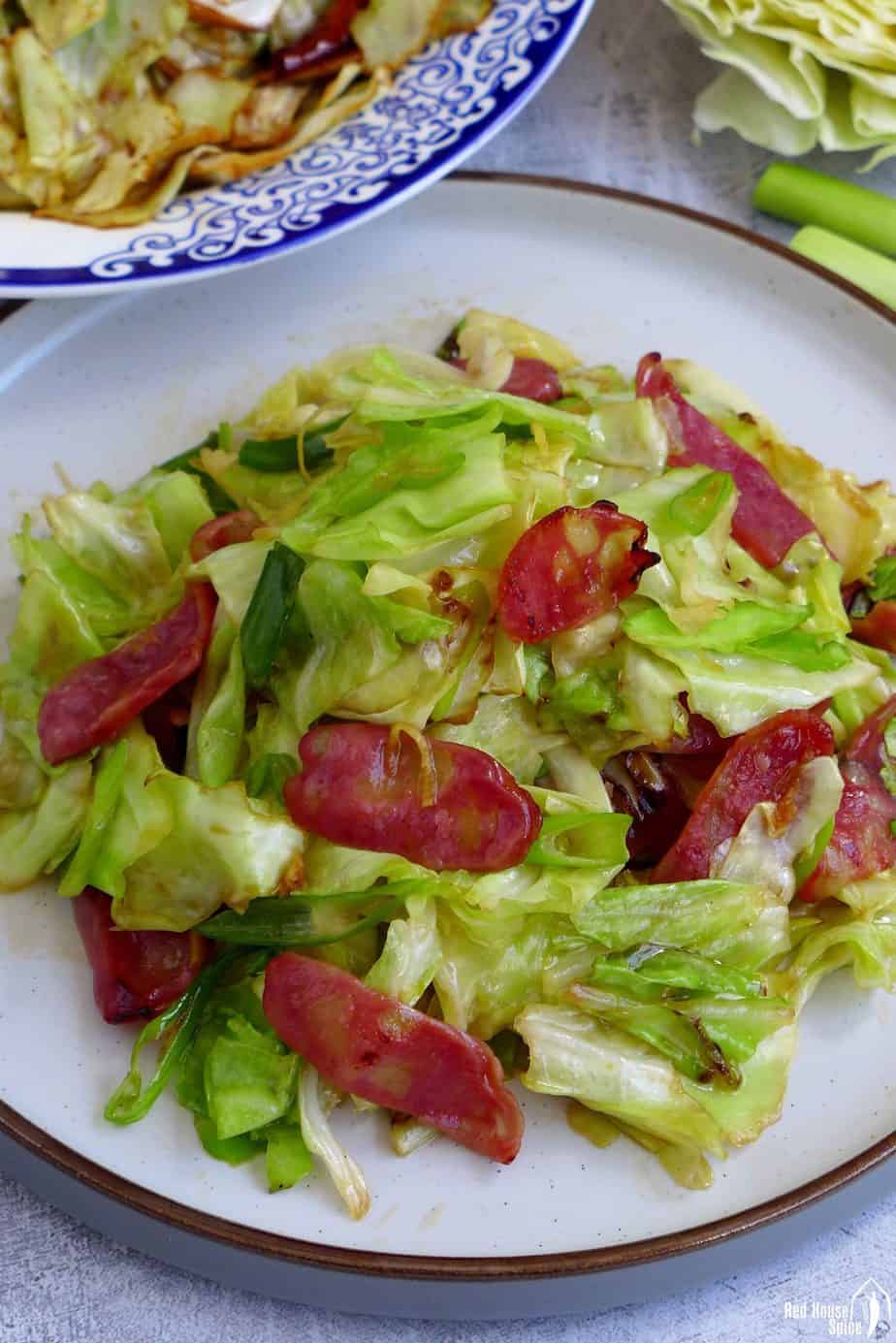
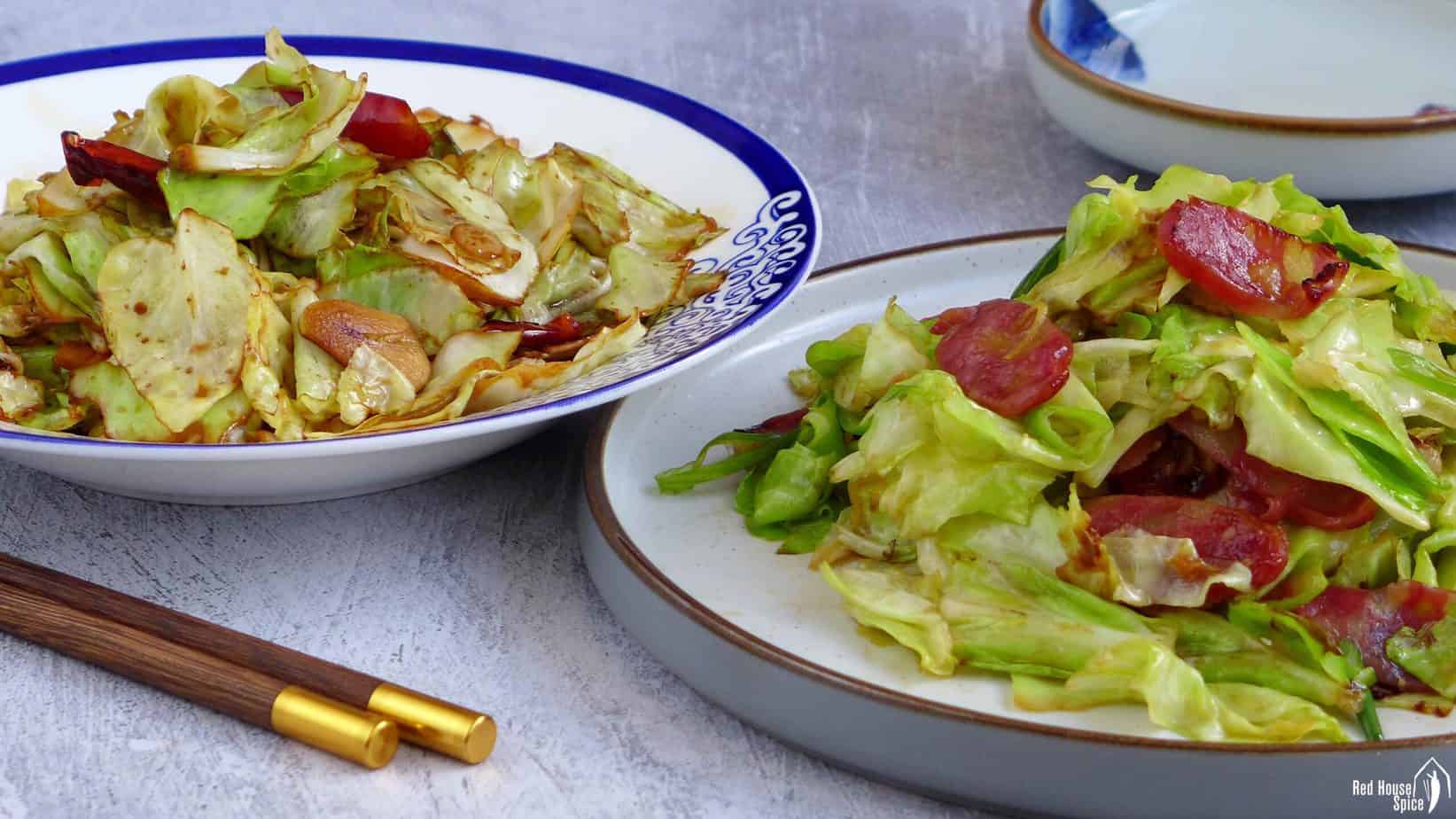
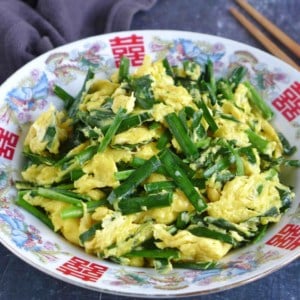

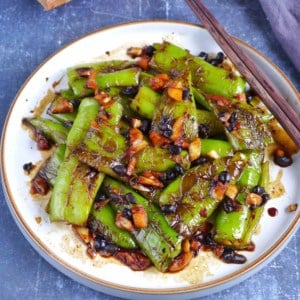

I just made the sausage version with some pointed cabbage, and it turned out so well! The lap cheong I found were pretty big, so I only used one, and that seemed just about right. I had it with some leftover rotisserie chicken and freshly cooked “oat rice” (a local product that tastes very similar to wholegrain rice). The cabbage dish tasted better than the chicken! The cabbage was soft but still with some crunch. I’ll definitely make this again!
That’s wonderful to hear!
Uh, now I read through the blog post again and noticed that what you call “sweetheart cabbage” is the same as pointed cabbage. Sorry for being an inattentive reader (it’s easy to miss things when reading on a small phone screen). Feel free to delete my (stupid) question as well as this follow-up comment.
No worries Aprillen! Happy cooking!
Thank you! I just bought some pointed cabbage, eager to try it!
Hi and thanks for the recipe! I’m eager to try it, but we don’t get the flat Taiwanese cabbage where I live (northern Europe). We do, however, get pointed cabbage, which is also looser, sweeter and more tender than the big round white cabbage. It’s still not as tender as napa cabbage, though. Do you think this might make a suitable substitute for the Taiwanese cabbage? Thank you!
Crisp and a hint of spicy flavor. Very appetizing! Thank you!
Love the vegetarian version. And. Love the hand torn cabbage not cut cabbage. Definitely better IMO. Has a better mouth feel and I believe tastier also.
Yes, I agree that it tastes better when hand-torn.
I made the sausage version and was surprised by how complex it tasted, given that there are only 6 ingredients in the recipe. Will make again, but maybe use only one sausage to 250g of cabbage.
Happy to hear that Alice!
I was craving the cabbage dish at Tasty Chengdu in LA – imho the best cabbage I have ever eaten anywhere. I love spice and really steer clear of most Cantonese style recipes as being too mild. So when I found your recipe, I decided to give it a go. Your recipe has come closer to the original than any other I have tried. So yummy! I followed instructions exactly except I substituted Napa cabbage. Thank you Wei!
I altered it and simplified it, and it was amazing. I sauted chopped up bacon, then added chopped ginger and garlic. I threw in some peppers and radishes because I had them. I then added crushed chipotle peppers and then the torn cabbage. When wilted I added soy sauce and fish sauce. This recipe was perfect. I didn’t have the other stuff, like light soy, but fish sauce added depth and umami. I skipped the sugar because added sugar is not only completely unnecessary, but it is also why the majority of people are prediabetic. I used to live in China, and the version I made tasted exactly like what I used to get there.
Thank you Bill for sharing your inspiration. My blog readers would appreciate your input.
This was so good! I did a hybrid of the vegetarian and non and it was perfect.
The irregular hand-torn shapes give you more exposed surface area on the edges, which absorb more of the other flavors. A clean, straight cut wouldn’t give you as much.
Will definitely make again. Thank you!
That’s great to hear! And thanks for your explanation on the benefit of the “hand-torn” method.
Cabbage was hand torn in restaurants because when torn it separates along the cell walls when cut you cut through the cells which causes more weeping and the cabbage turns brown faster.
Thanks Tom for the explanation!